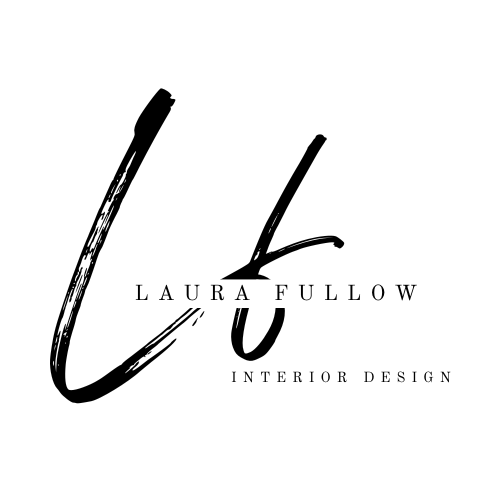Wall art is one of the most important aspects of a design plan. While it’s not necessarily functional, like a sofa or a lamp, artwork imbues your personality into your space and helps tie the design together. Think of wall art as a great piece of statement jewelry — a very personal design element that elevates your look and can make or break your outfit. Artwork, like jewelry, can transform an ordinary space into something extraordinary!
Let’s take a look at a few of my favorite ways to use artwork to punch-up your home.
But first…
Find Your Focal Point
The first thing to do when designing any space is to find your focal point. This is the place where your eye tends to land when you look around a room. This spot can be an architectural focal point such as a fireplace or window, or a focal point that you designate yourself (think armchair and side table or a painted accent wall). An easy way to designate your focal point if you don’t already have one is to use the wall opposite of the room’s entry as the default focal point.
Focal points are necessary for creating a cohesive design; they help ease psychological unease produced by a disjointed space where the eye can not relax and “land.” With a set focal point, you can plan your furniture layout more efficiently while create the right atmosphere for your space.

Express Your Personality
Art has a unique ability to stir emotions, create connections and foster conversations. Therefore, the artwork that you choose for your home should similarly translate your personality, values, interests, and sense of humor into your space.
For instance, if you’re really into music, consider using framed prints of your favorite artists. Concert posters, whether new or vintage, are another fun way to customize and decorate your space. Like to travel? Use your globe-trotting souvenirs as wall art. And remember — wall art isn’t just framed prints — it can be whatever you like!

Mix It Up
When most people think of wall art they think of framed prints or paintings. Don’t forget that wall art also includes other materials like metal, wood, textiles, and mirrors. For instance, you can use a long, narrow painting as a headboard — just hang the artwork high enough so that it clears your bed linens and pillows. If you’re looking for something out of the ordinary, you can mix it up by hanging non-traditional art, like these Molten Wall Discs below.

Tips for Hanging Your Artwork
Believe it or not, hanging wall art at the wrong height can make or break your design. Too high and it feels out of reach; too low and the focus is diminished. In general, you want to position your artwork so that the focus — the heart — is at eye level. When planning to hang multiple pieces as a group, hang in odd numbers and use the second (or “middle”) piece as the focal point.
If you’re a renter or just prefer a more casual look, consider leaning your artwork against the wall rather than hanging it. Framed pieces and photos can be grouped together on an entry table, for example. Larger statement pieces — much like oversized mirrors — look great when positioned on the floor behind a table or chair.
Pro Tip: If you want to hang your artwork above furniture like sofas and console tables, the ideal range is between 8- to 16-inches.

In my next post, we’ll talk about my favorite ways to keep your design choices sustainable.
Until then,
Laura





Recent Comments